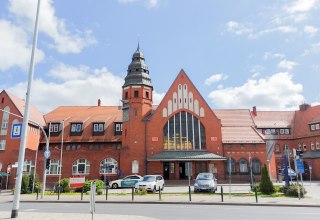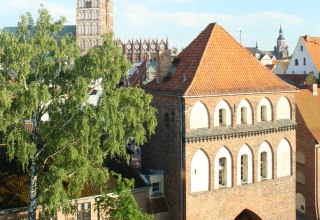St. Katharinen is one of the few monasteries in northern Germany whose Gothic substance has been almost completely preserved. It was founded by Dominicans in 1251.
The founder of the monastery was Prince Jaromar II of Rügen. In its origin, this brick building was a 73-meter-long, three-nave hall church. An architectural feature is the chapter house with its beautiful cross-ribbed vault, supported by eight slender pillars with vault paintings from the 15th century. It is one of the most beautiful interiors of the Low German brick Gothic. The remter of the monastery is one of the most impressive Gothic interiors in northern Germany. Because of its architectural beauty and excellent acoustics, it still offers the best conditions for concerts today. With the Reformation, St. Catherine's Monastery came into the possession of the city. In 1560, students and teachers of the grammar school founded at that time moved to the western part. The humanistic educational institution had its domicile here until 1945. The eastern part of the monastery was a municipal orphanage until 1919. Over the centuries, numerous alterations were made, but the architectural charm of the various rooms remained. After extensive restoration work between 1921 and 1924, it became home to the Provincial Museum for New Pomerania and Rügen. With its more than 50 rooms, the Katharinenkloster has housed the Museum of Cultural History since 1924 and the German Oceanographic Museum and Aquarium since 1951.In 1973, a cantilevered structure was installed in the hall church, allowing the German Oceanographic Museum to make intensive use of the monastery as an exhibition space.

















